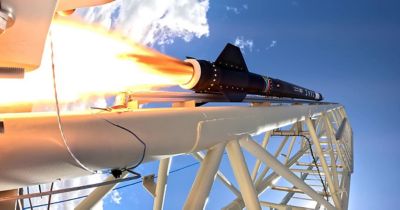-
United States -
United Kingdom -
India -
France -
Deutschland -
Italia -
日本 -
대한민국 -
中国 -
台灣
-
Ansys s'engage à préparer les étudiants d'aujourd'hui à la réussite, en leur fournissant gratuitement un logiciel de simulation.
-
Ansys s'engage à préparer les étudiants d'aujourd'hui à la réussite, en leur fournissant gratuitement un logiciel de simulation.
-
Ansys s'engage à préparer les étudiants d'aujourd'hui à la réussite, en leur fournissant gratuitement un logiciel de simulation.
-
Contactez-nous -
Carrières -
Étudiants et universitaires -
-
S'inscrire -
Déconnexion -
Espace client -
Support -
Communautés partenaires -
Contacter le service commercial
Pour les États-Unis et le Canada
+1 844.462.6797
-

When selecting the right central processing unit (CPU) for optimizing Ansys Mechanical structural finite element analysis (FEA) software performance, there are two major players to consider: Intel and AMD. Both have made significant advancements in recent years, but choosing between them depends on several factors that directly affect simulation speeds, scalability, and overall performance for large, complex models.
Ansys Mechanical APDL (MAPDL) software currently supports only x86 processors, which are manufactured by Intel and AMD. MAPDL software is built using Intel compilers, math libraries, and MPI libraries, which are the key reasons that it runs exceptionally well on Intel processors. However, AMD's EPYC line of processors has emerged as a serious competitor, offering exceptional performance and value for both workstations and data centers.
Benchmarking Intel vs. AMD Performance
Taking a closer look at the performance of these processors in action allows us to benchmark their functionalities. In Figure 1, we compare the performance of the Intel Xeon Platinum 8480+ (56-core, code name: Sapphire Rapids) processor against the AMD EPYC 9474F (48-core, code name: Genoa) processor. This benchmark, run by Ansys’ high-performance computing (HPC) partner MicroConsult, focuses on a highly demanding scenario: a nonlinear transient analysis involving creep and nonlinear geometry effects, with 8.2 million degrees of freedom (DOF). It illustrates how a single Linux node with two CPUs from each manufacturer performs across different core counts.

Figure 1. Ansys Mechanical APDL (MAPDL) solver rating (that is, runs per day) versus the number of central processing unit (CPU) cores, comparing AMD’s Genoa processor with Intel’s Sapphire Rapids processor
In this case, AMD’s Genoa processor shows impressive performance as the core count increases, surpassing Intel’s Sapphire Rapids at higher core counts. A closer look at clock frequencies reveals that the AMD Genoa, built on a more advanced manufacturing process, maintains a 4 GHz clock speed, even with all cores active, while the Sapphire Rapids CPU drops to 2.1 GHz under a full load. This is a crucial consideration for users running large-scale, highly parallel simulations, as it highlights AMD’s emergence as a strong competitor in HPC environments.
Hardware Evolution Over Time
Other benchmarks, shown in Figure 2, highlight the evolution of hardware performance across multiple generations, from 2017 through 2023. These benchmarks, also run by MicroConsult, evaluate a variety of simulations, covering different geometries, analysis types, and equation solvers. The models run on two-socket systems with the same version of MAPDL across a wide array of Intel and AMD processors.

Figure 2. MAPDL solver rating (that is, runs per day) for a large variety of benchmarks, comparing a wide range of Intel and AMD processors
The results are compelling: Newer processors, particularly from the more recent Intel Xeon (6448H) and AMD EPYC (9474F) lines, provide significant performance improvements over their predecessors. This graph clearly demonstrates how upgrading hardware can greatly reduce solver times, which in turn enables faster iterations and more detailed simulations. Users with older hardware could benefit immensely from upgrading to these newer CPU models.
AMD’s Growing Support in Mechanical Software
Ansys has long partnered with Intel but also closely collaborates with AMD to ensure optimal performance on both platforms. Beginning with Ansys 2022 R1, MAPDL software introduced behind-the-scenes changes to automatically use AMD’s math library (AOCL) when running on AMD processors. Specifically, the BLIS library is now used to perform key solver computations while Intel’s MKL library is used for Intel chips.
This automatic detection ensures that users get the best performance regardless of whether they are running on an Intel or AMD platform. Additionally, Ansys has been continuously updating both the MKL and BLIS libraries to match the latest CPU architectures, ensuring that users can leverage the most efficient mathematical computations available for their hardware.
In more recent developments, Ansys 2024 R2 introduced enhancements to command-line parameters for running distributed memory parallel (DMP) processing with nondefault OpenMPI software, particularly benefiting AMD processors. These improvements not only boost performance but enhance the robustness of simulations on clusters and servers equipped with AMD chips, further strengthening AMD’s position in HPC for Ansys users.
AMD Instinct GPUs and APUs
An exciting aspect of AMD's ecosystem is the introduction of its Instinct GPUs, particularly with the MI300 series. These cards feature a data center-level accelerated processing unit (APU), which integrates both CPU and graphics processing unit (GPU) technologies on a single package. This is a game-changing concept for parallel computing, enabling more efficient and faster calculations for large-scale simulations.
Starting with Ansys 2024 R1, MAPDL software now supports the latest HIP/ROCm libraries for MI300 cards. Although the MI300 series is still relatively new, it shows great promise in enhancing the performance of FEA solvers on AMD platforms. Ansys’ strategic collaboration with AMD ensures that users will benefit from continued support and optimization for these cutting-edge technologies.
Finding the Right CPU for Your Mechanical Software Workloads
When selecting between AMD and Intel processors for Mechanical software applications, it’s clear that both offer compelling performance depending on the use case. Intel processors, with their long-standing integration of compilers and libraries, remain a top choice. But AMD’s EPYC line has proven its ability to compete strongly, especially in high core count scenarios and with the latest generation of AMD EPYC CPUs.
For organizations looking to optimize performance, it’s important to benchmark specific workloads on both platforms to understand which will provide the best return on investment. Ansys’ ongoing improvements in supporting both Intel and AMD hardware means that either choice can provide significant performance gains, especially as new generations of processors emerge.
Don’t Miss Out: Video and Supercomputing Presentations
Ready to dive deeper into the AMD versus Intel debate for optimizing Mechanical software? Watch this video with MicroConsult where we break down key performance insights and help you make informed decisions on your next CPU investment. Additionally, join us at Supercomputing 2024 (SC24) from Nov. 17 to 22 in Atlanta, where experts (including Jeff Beisheim, senior principal R&D engineer at Ansys) will showcase live benchmarks on both AMD and Intel platforms.
Ansys’ presence at SC24 will also feature presentations from other leading HPC partners, highlighting Ansys performance results on the latest processors: Intel’s Granite Rapids and AMD’s Turin. Whether you're considering an infrastructure upgrade or looking to optimize your current system, this event will provide the key information you need to stay ahead.
Request a meeting with us at SC24, and prepare to enhance your simulation speed and efficiency.
The Advantage Blog
The Ansys Advantage blog, featuring contributions from Ansys and other technology experts, keeps you updated on how Ansys simulation is powering innovation that drives human advancement.













